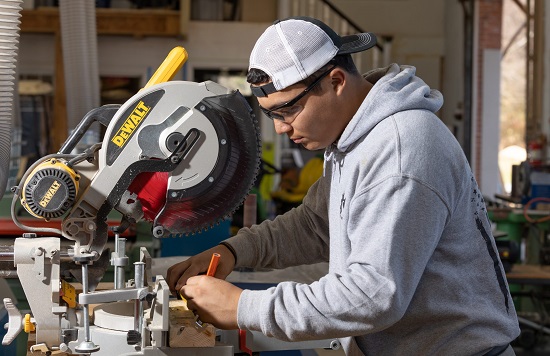 Tuesday, May 7, 2024
Tuesday, May 7, 2024  Tuesday, May 7, 2024
Tuesday, May 7, 2024 
Young men in jackets and ties walk along tidy walkways that connect the redbrick buildings of the 220-acre campus of the Williamson College of the Trades.
They wake up around 6 each morning, turn out for inspection, attend a morning assembly, then spend full days doing coursework and in shop, alternating at chores in the kitchen and tending the buildings and grounds. No alcohol is allowed, phones can’t be in view and even straying onto the grass costs demerits. Lights out is strictly at 10:30.
The college was established in 1888 by a frugal wealthy dry goods merchant to train young men as blacksmiths, bricklayers, harness-makers, wheelwrights and other kinds of tradesmen “so they may be able to support themselves by the labor of their own hands.”
Now, its original endowment having grown to $128 million, it enrolls 265 mostly low-income men who spend three years, at no cost to them, earning associate degrees in subjects including carpentry, masonry, machine tooling and power plant technology.
“It’s old school,” said Michael Rounds, Williamson’s president. A throwback.
But education for the skilled trades appears to be returning to fashion, according to enrollment trends, survey data and other signals.
“If you look at where the jobs are, the sweet spot is an associate’s degree with a focus on the trades,” said Rounds, a former Army lieutenant colonel who previously taught engineering at West Point and whose desk faces a portrait of benefactor Isaiah Vansant Williamson.
One trend reviving interest in education in the trades appears to be growing doubt among high school students and career switchers about the value of a four-year college; the proportion of high schoolers who are considering a four-year education has plummeted from 71 percent to 48 percent since the start of the Covid-19 pandemic.
Keep reading on HechingerReport.org